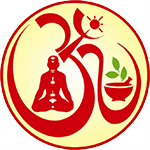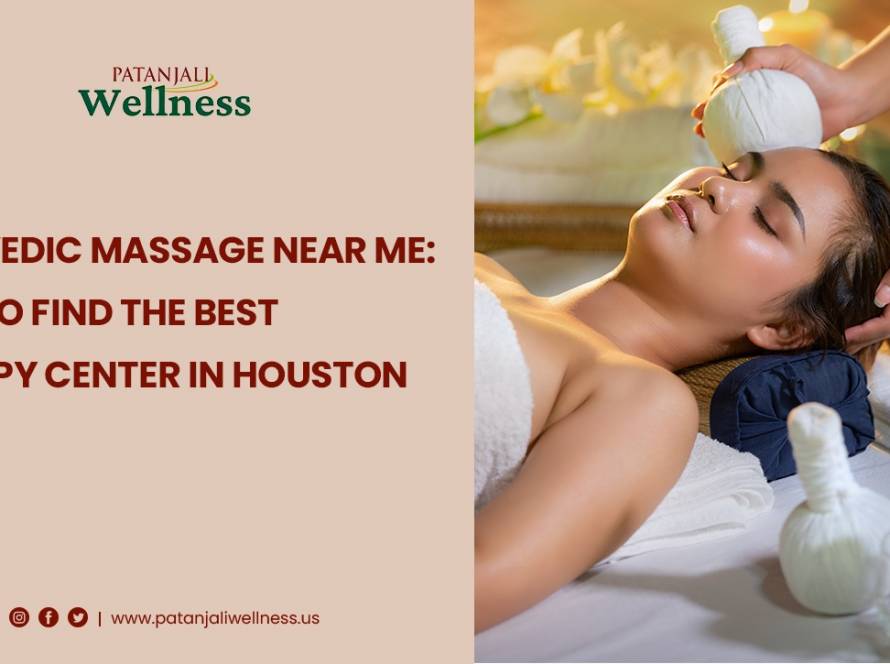A few years ago, I was running on three espresso shots and a calendar full of deadlines. My shoulders lived up near my ears, my sleep was patchy, and every evening I felt like a phone on 3% battery. A friend suggested I try something different — not a quick Swedish rub-down, but an authentic Ayurvedic session she’d discovered at a small Ayurvedic Massage center in Houston. I went sceptical and came away thinking, “This is something different — deeper, quieter, and oddly practical.”
Ayurveda isn’t a trend. It’s a 5,000-year-old system focused on the balance of body, mind, and daily rhythms. The massages are not just indulgences; they’re therapeutic rituals that use herbal oils, heat, and hands trained to listen to the body. If you’re searching “Ayurvedic Massage in Houston” or want to learn about Ayurvedic Massage Therapy before you book, here are the five treatments I recommend trying — and why each one matters.
1. Abhyanga — warm oil, full-body reset
Abhyanga is what most people picture when they think “Ayurvedic Massage”: a full-body oil massage using warm, dosha-specific oils. What surprised me was how intimate the experience felt — the consistent, flowing strokes are almost hypnotic.
Why try it?
The Abhyanga is creating deep nourishment for the skin. It helps to loosen tight muscles, allowing the lymphatic system to remove the accumulated stress. During the first session, I had a deep, restful sleep — the first one in months.
How it is done:
Synchronized long strokes based on constitutional oil (Vata, Pitta, Kapha) are applied by the therapist. It primarily enhances bodily health, cools the mind, and fosters greater awareness of relaxation and subtle detoxification.
Tip for Houston residents:
Look for an Ayurvedic Massage Center in Houston that asks about your health history and dosha before starting. That attention to detail separates authentic Ayurvedic therapy from standard spa services.
2. Shirodhara — the “brain quieter”
There’s nothing else quite like Shirodhara. You lie down while a steady stream of warm herbal oil is poured across your forehead — targeting the “third eye.” The first thirty seconds feel strange; by minute five, you’re floating.
Why try it?
When your mind never seems to switch off — buzzing with plans, to-dos, replayed conversations — Shirodhara is deeply calming. People speak of deep sleep, clarity in thinking, and a long-lasting feeling of calm. It felt as if a tight wire had been loosened within me.
When to choose it:
It is a great choice if you experience insomnia, tension headaches, or prolonged stress. It is usually administered alongside a light head/neck massage for optimal results.
Houston note:
Because Shirodhara requires precise technique and properly prepared oils, choose a center that offers it as a dedicated Ayurveda treatment rather than a “special” add-on.
3. Udvartana — the invigorating herbal powder massage
Unlike oil-based treatments, Udvartana uses specially prepared herbal powders applied with brisk, upward strokes. Don’t be fooled — it’s vigorous, warming, and leaves your skin glowing.
Why try it?
Udvartana enhances circulation, facilitates lymphatic drainage, and helps prevent the development of cellulite. After just one application, the skin feels smooth and half-empty limbs feel much lighter-it energizes in a completely different way than caffeine.
Who benefits:
People looking to jumpstart a detox or regain energy after a seasonal slump. It pairs well with a short steam or sauna.
Houston tip:
This is great before summer events when you want skin that looks refreshed. Ask your Ayurvedic Massage Therapy provider what herbs they use — authentic centers will be transparent.
4. Pizhichil — the royal oil bath
Ever wanted to feel pampered like royalty? That’s Pizhichil. Two therapists may work in rhythm, pouring warm medicated oil over your body while massaging. It was historically reserved for those who needed deep healing.
Why try it?
Pizhichil is really good in cases of chronic stiffness, arthritic pains, or neurological recovery. The warm oil, coupled with smooth handling, soothes clogged muscles, improves blood circulation, and the skin glows.
A personal note:
I’ve had clients with persistent lower-back pain tell me they felt significant improvement after a course of Pizhichil — not just temporary relief but a calmer baseline.
Considerations:
This is a longer treatment and used therapeutically, so plan for downtime afterward.
5. Marma Therapy — energy point work that’s subtle and powerful
Marma therapy zeroes in on energetic touch points — marma — throughout the body. Think of it as blending acupressure with Ayurvedic energetics. The therapist listens with fingertips, releasing trapped tension at specific spots.
Why try it?
If one carries stress within the tense jaw, shoulder, or hips, the therapy of marma can help unlock the stuck pattern. These feelings could get very subtle, like maybe having a small loosening or a softening of the mood; however, quite often, these feelings return with better sleep, with less pain, and with an easygoing attitude.
Who it helps:
People recovering from burnout, those with chronic pain patterns, or anyone who wants to work on the “energetic” side of wellness.
Houston practical:
Seek Ayurvedic Massage Therapy centers where therapists have specific marma training. The work demands sensitivity and experience.
How to choose the right center in Houston
I learned that not all centers are created equal. When I helped my sister pick a place in Houston, we used a simple checklist that you can copy:
Credentials matter. Does the center employ certified Ayurvedic practitioners?
Personalized approach. Do they ask about your health history and dosha?
Ingredients. Are oils and herbs listed and, ideally, natural/medicinal-grade?
Reviews & referrals. Word-of-mouth from friends or trusted reviews will tell you more than any flashy website.
Comfort & hygiene. A calm, clean, and respectful environment is non-negotiable.
Searching “Ayurvedic Massage in Houston” will produce many options. Narrow down to places that clearly separate true Ayurveda from standard spa therapies — the difference is in the consultation, the oils, and the therapist’s training.
What to expect during your first visit
If you’re new to Ayurveda, the center should begin with a brief (or sometimes lengthy) intake, which includes questions about your diet, sleep, digestion, and overall health. That intake guides the oil choice and the treatment plan.
After treatment, allow a little quiet time. Don’t rush back into traffic or a hectic schedule. Drink water, rest, and notice how your body responds over the next 48 hours. For many treatments, benefits accumulate with repeated sessions.
Final thoughts — why it’s worth trying
Ayurvedic massage differs from a fast-paced office-hour massage; it’s a practice that encourages slowing down. Whether you’re in Houston or travelling, a proper Ayurvedic Massage center in Houston can be a space of recalibration — physically warming stiff joints, softening muscles, and reminding your nervous system how to relax.
My own verdict? After a few sessions of Abhyanga and one unforgettable Shirodhara, the constant “edge” that had been my day-to-day faded. I sleep better. I breathe more easily. And I’m more intentional about taking breaks, staying hydrated, and maintaining a healthy rhythm. That’s the kind of change I’m happy to recommend.




